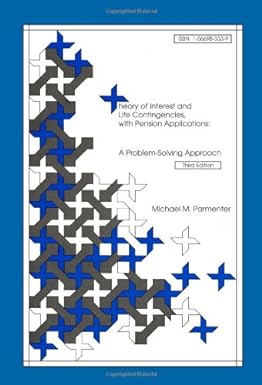Common stock differs from preferred stock in that the amount of the dividend paid is not constant.
Question:
Common stock differs from preferred stock in that the amount of the dividend paid is not constant. In theory, however, the price of a common stock should be equal to the present value of all future dividends, and one would try to settle on a price by estimating what these dividends are likely to be. In practice, however, prices vary widely in the market because of the influence of investors buying and selling various stocks, and we have not taken any of this into account. However, let us try one problem in this area.
Deepwater Oil Inc. has a policy of paying out 25% of its earnings as quarterly dividends. It is estimated that Deepwater will earn 2 per share during the next quarter, and that earnings will increase at a rate of 2% per quarter thereafter. Find the theoretical price an investor should pay to earn
(a) 10% per year convertible quarterly;
(b) 6% per year convertible quarterly.
AppendixLO1
Step by Step Answer:

Theory Of Interest And Life Contingencies With Pension Applications A Problem Solving Approach
ISBN: 978-1566983334
3rd Edition
Authors: Asa Michael M. Parmenter, Ph.d.





